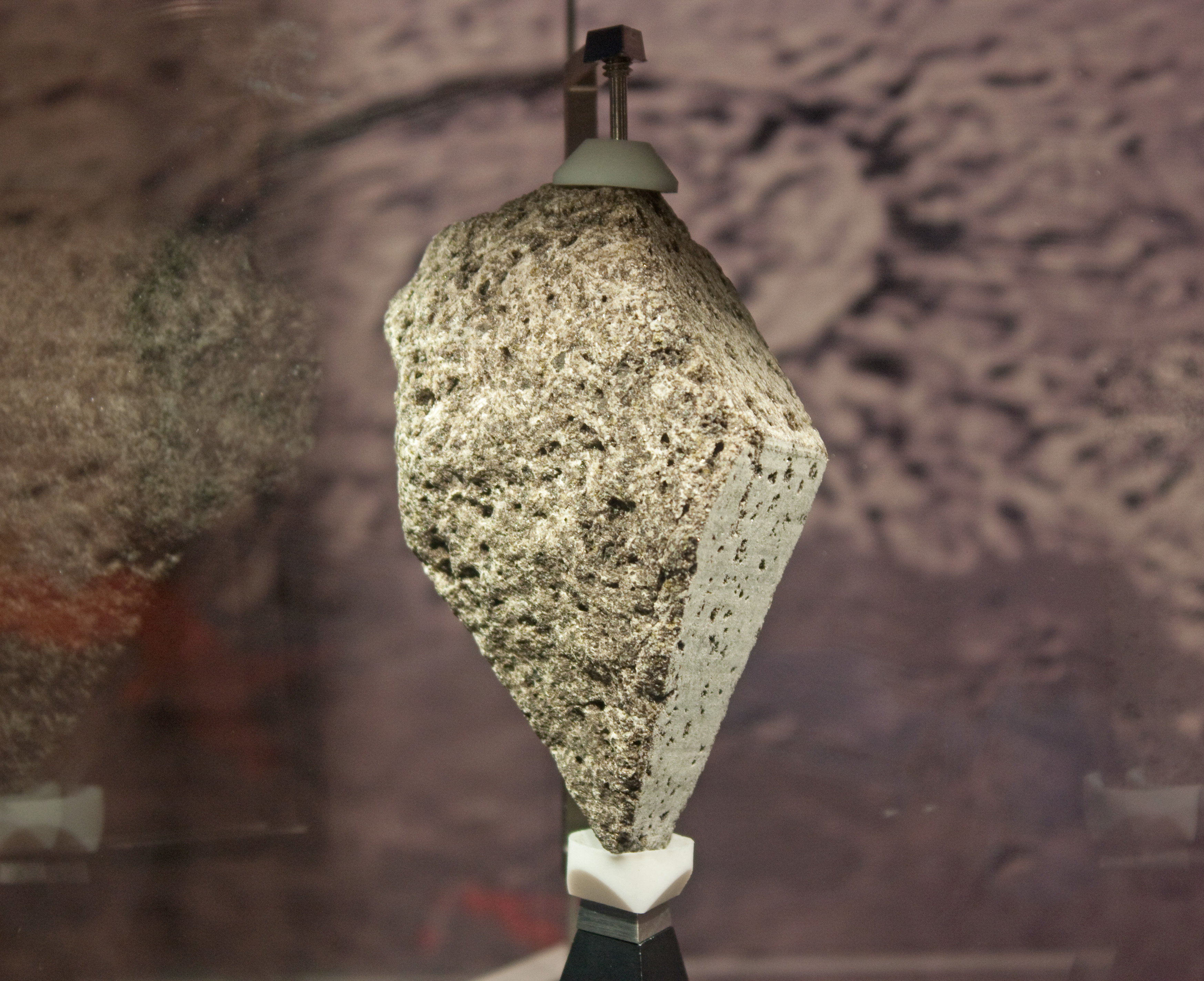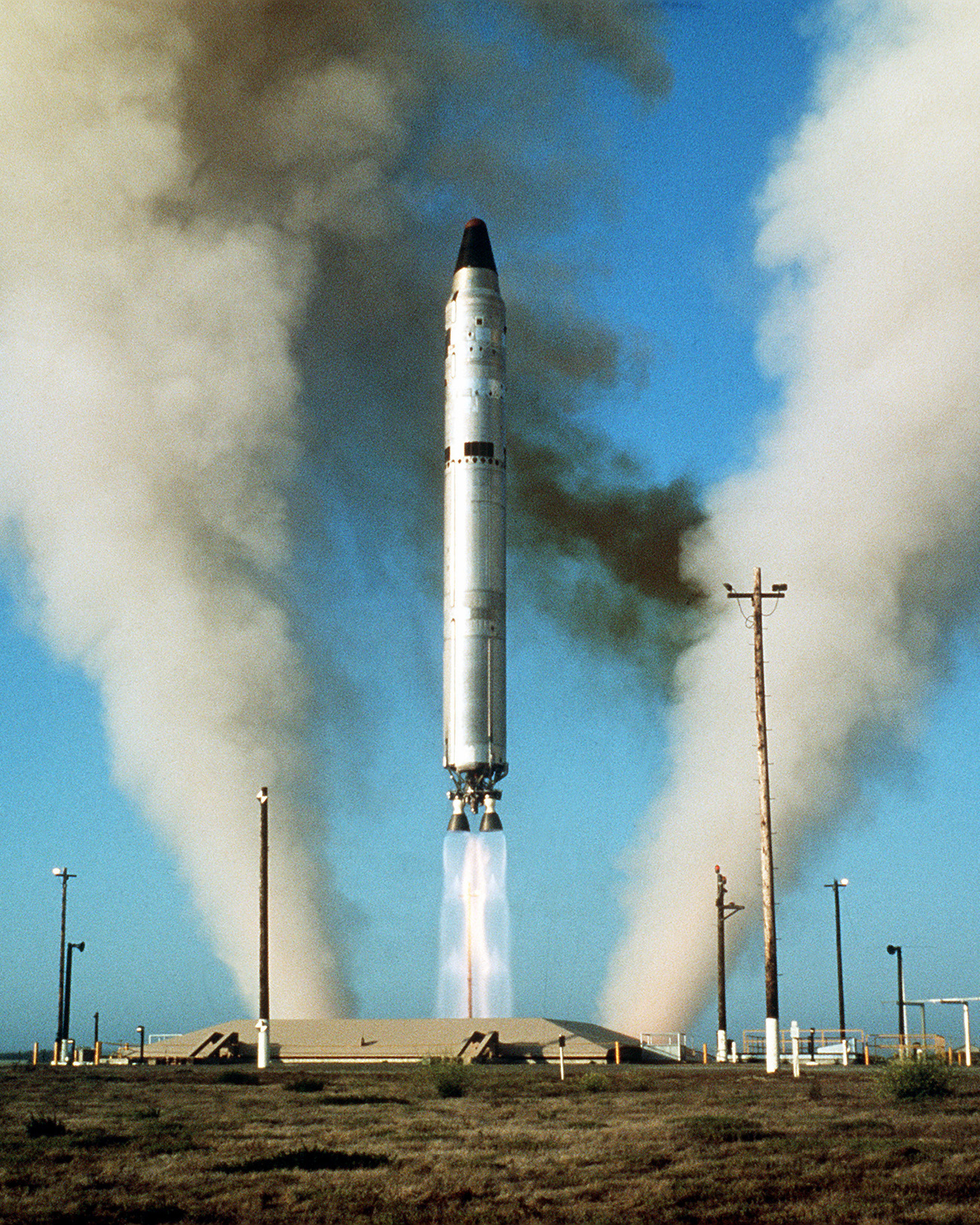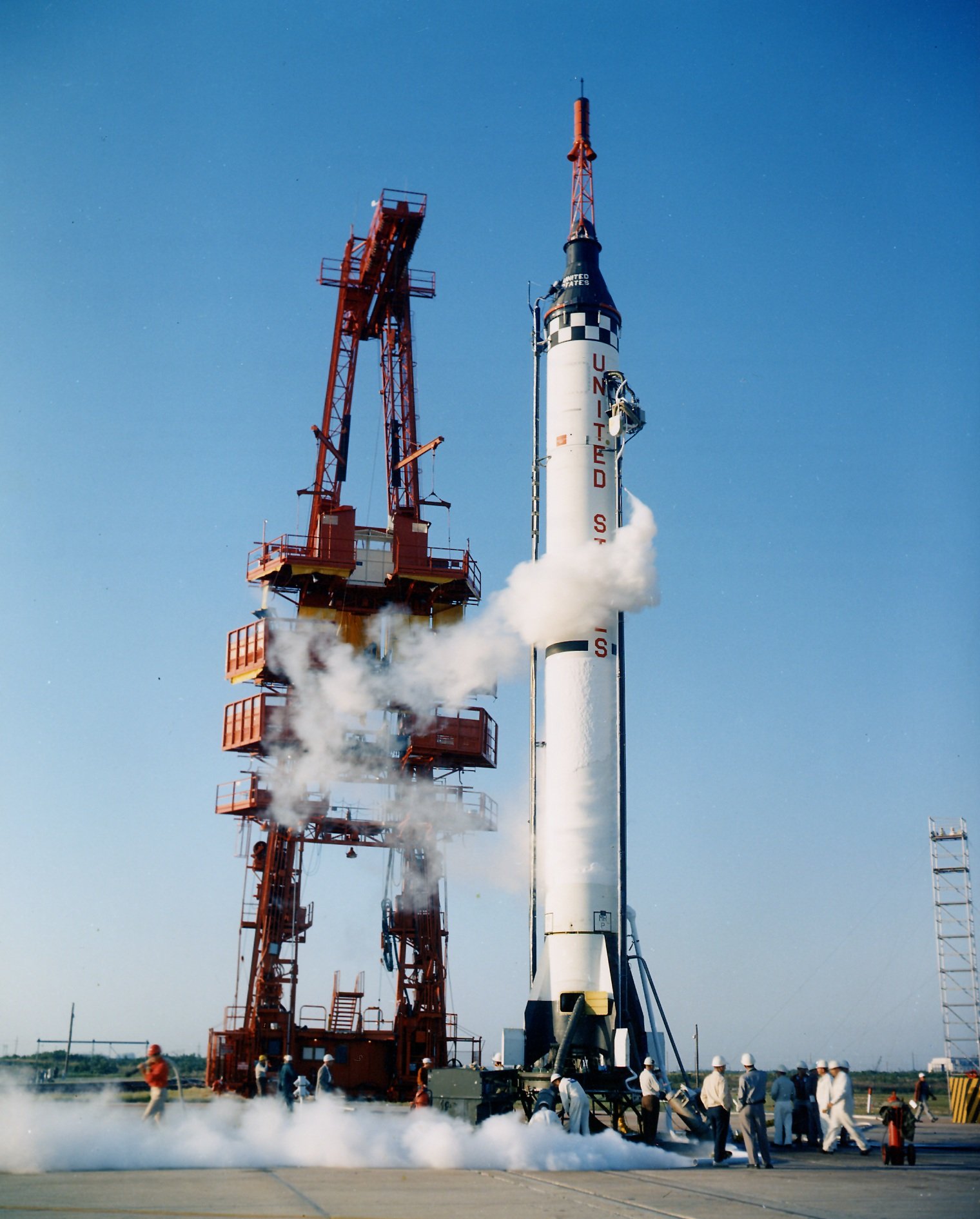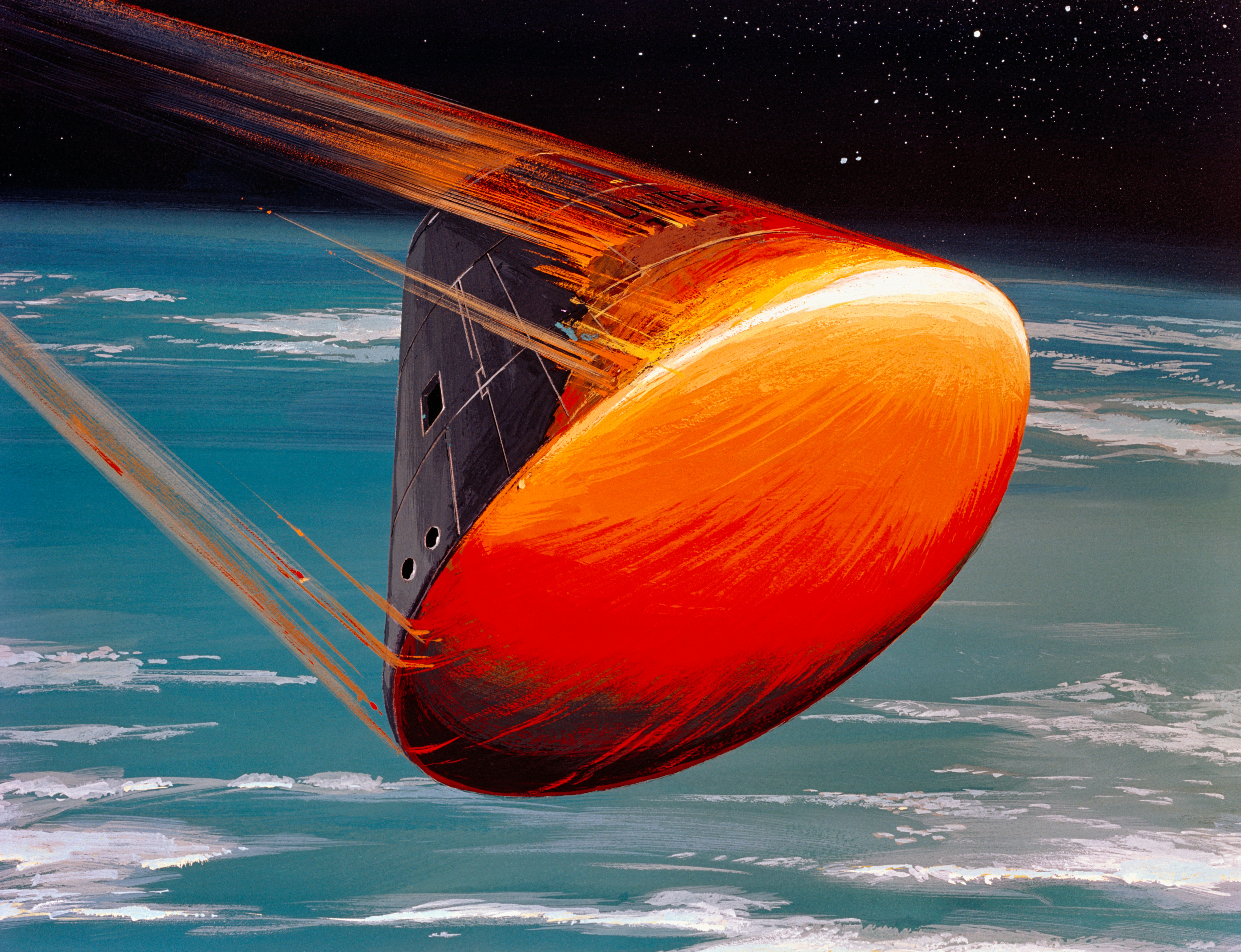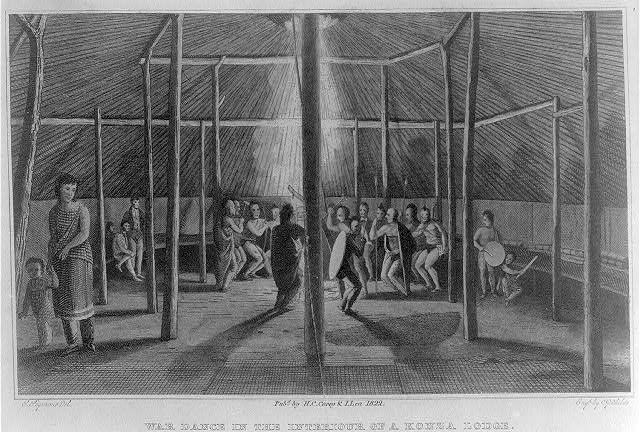|
Kansas Cosmosphere And Space Center
Cosmosphere is an international science education center and space museum in Hutchinson, Kansas, United States, located on the northeast corner of Plum Street and 11th Avenue, next to the Hutchinson Community College. It was previously known as the Kansas Cosmosphere. The museum houses over 13,000 spaceflight artifacts—the largest combined collection of US and Russian spaceflight artifacts in the world, and is home to various space educational programs. Facilities The Cosmosphere grew from a planetarium established on the Kansas State Fairgrounds in 1962. The facility houses the largest collection of Russian space artifacts outside of Moscow, and a collection of US space artifacts second only to the National Air and Space Museum in Washington, D.C. The Cosmosphere has five venues: the Hall of Space Museum, the Justice Planetarium, the Carey Digital Dome Theater, Dr. Goddard's Lab (an explosive live science presentation on the history of rocketry) and CosmoKids, an intera ... [...More Info...] [...Related Items...] OR: [Wikipedia] [Google] [Baidu] |
Hutchinson, Kansas
Hutchinson is the largest city in and the county seat of Reno County, Kansas, Reno County, Kansas, United States. The city is located on the Arkansas River. It has been home to salt mines since 1887 (thus its nickname of "Salt City") but locals call it "Hutch". As of the 2020 United States census, 2020 census, the population of the city was 40,006. Each year, Hutchinson hosts the Kansas State Fair, and National Junior College Athletic Association (NJCAA) Men's Basketball Tournament. It is the home of the Hutchinson Community College, the Cosmosphere aerospace museum, and Strataca underground salt museum. History The city of Hutchinson was founded in 1871 when frontiersman Clinton "C.C." Hutchinson contracted with the Atchison, Topeka and Santa Fe Railway, Santa Fe Railway to make a town at the railroad's crossing over the Arkansas River. The town actually sprang up about one-half mile north, on the banks of Cow Creek (Kansas), Cow Creek, where a few houses already existe ... [...More Info...] [...Related Items...] OR: [Wikipedia] [Google] [Baidu] |
From The Earth To The Moon (miniseries)
''From the Earth to the Moon'' is a twelve-part 1998 HBO television miniseries co-produced by Ron Howard, Brian Grazer, Tom Hanks and Michael Bostick. In docudrama format, it tells the story of the Apollo program during the 1960s and early 1970s. Largely based on Andrew Chaikin's 1994 book, '' A Man on the Moon'', the series is known for its accurate telling of the story of Apollo and the special effects under visual director Ernest D. Farino. The series takes its title from, but is not based upon, Jules Verne's 1865 science fiction novel ''From the Earth to the Moon''. Hanks appears in every episode, introducing each of the first eleven. The twelfth and final episode, represented in pseudo- documentary format, is narrated by Blythe Danner, interspersed with a reenactment of the production of Georges Méliès' 1902 film '' Le Voyage dans la Lune'', also in part inspired by Verne's novel. Hanks narrates and appears in these scenes as Méliès' assistant, with Tchéky Kar ... [...More Info...] [...Related Items...] OR: [Wikipedia] [Google] [Baidu] |
Moon Rock
Moon rock or lunar rock is rock originating from Earth's Moon. This includes lunar material collected during the course of human exploration of the Moon, and rock that has been ejected naturally from the Moon's surface and landed on Earth as lunar meteorites. Sources Moon rocks on Earth come from four sources: those collected by six United States Apollo program crewed lunar landings from 1969 to 1972; those collected by three Soviet uncrewed Luna probes in the 1970s; those collected by the Chinese Lunar Exploration Program's uncrewed probes; and rocks that were ejected naturally from the lunar surface before falling to Earth as lunar meteorites. Apollo program Six Apollo missions collected 2,200 samples of material weighing , processed into more than 110,000 individually cataloged samples. Luna program Three Luna spacecraft returned with of samples. The Soviet Union abandoned its attempts at a crewed lunar program in the 1970s, but succeeded in landing three robo ... [...More Info...] [...Related Items...] OR: [Wikipedia] [Google] [Baidu] |
Titan II
The Titan II was an intercontinental ballistic missile (ICBM) developed by the Glenn L. Martin Company from the earlier Titan I missile. Titan II was originally designed and used as an ICBM, but was later adapted as a medium-lift space launch vehicle (these adaptations were designated Titan II GLV and Titan 23G) to carry payloads to Earth orbit for the United States Air Force (USAF), National Aeronautics and Space Administration (NASA) and National Oceanic and Atmospheric Administration (NOAA). Those payloads included the USAF Defense Meteorological Satellite Program (DMSP), NOAA weather satellites, and NASA's Gemini crewed space capsules. The modified Titan II SLVs (Space Launch Vehicles) were launched from Vandenberg Air Force Base, California, up until 2003. Titan II missile Part of the Titan rocket family, the Titan II ICBM was the successor to the Titan I, with double the payload. Unlike the Titan I, it used hydrazine-based hypergolic propellant which was stor ... [...More Info...] [...Related Items...] OR: [Wikipedia] [Google] [Baidu] |
Mercury-Redstone Launch Vehicle
The Mercury-Redstone Launch Vehicle, designed for NASA's Project Mercury, was the first American crewed space booster. It was used for six sub-orbital Mercury flights in 1960 and 1961, culminating with the launch of the first, and eleven weeks later, the second American (and the second and third humans) in space. The four subsequent Mercury human spaceflights used the more powerful Atlas booster to enter low Earth orbit. A member of the Redstone rocket family, it was derived from the U.S. Army's Redstone ballistic missile and the first stage of the related Jupiter-C launch vehicle; but to human-rate it, the structure and systems were modified to improve safety and reliability. Modifications from the Redstone missile NASA chose the U.S. Army's Redstone liquid-fueled ballistic missile for its sub-orbital flights as it was the oldest one in the US fleet, having been active since 1953 and had many successful test flights.''The Mercury-Redstone Project'', p. 2-2, 3-1. T ... [...More Info...] [...Related Items...] OR: [Wikipedia] [Google] [Baidu] |
Apollo Command Module
The Apollo command and service module (CSM) was one of two principal components of the United States Apollo (spacecraft), Apollo spacecraft, used for the Apollo program, which landed astronauts on the Moon between 1969 and 1972. The CSM functioned as a mother ship, which carried a crew of three astronauts and the second Apollo spacecraft, the Apollo Lunar Module, to lunar orbit, and brought the astronauts back to Earth. It consisted of two parts: the conical command module, a cabin that housed the crew and carried equipment needed for atmospheric reentry and splashdown (spacecraft landing), splashdown; and the cylindrical service module which provided propulsion, electrical power and storage for various consumables required during a mission. An umbilical cable, umbilical connection transferred power and consumables between the two modules. Just before reentry of the command module on the return home, the umbilical connection was severed and the service module was cast off and al ... [...More Info...] [...Related Items...] OR: [Wikipedia] [Google] [Baidu] |
Gemini 10
Gemini 10 (officially Gemini X) With Gemini IV, NASA changed to Roman numerals for Gemini mission designations. was a 1966 crewed spaceflight in NASA's Gemini program. It was the 8th crewed Project Gemini, Gemini flight, the 16th crewed American flight, and the 24th spaceflight of all time (includes X-15 flights over ). During the mission, flown by Command Pilot John Young (astronaut), John Young and Pilot Michael Collins (astronaut), Michael Collins, Collins became the first person to perform two Extravehicular activity, extravehicular activities. Crew Backup crew Support crew *Buzz Aldrin, Edwin E. "Buzz" Aldrin (Houston CAPCOM) *Gordon Cooper, L. Gordon Cooper Jr. (Cape and Houston CAPCOM) Jim Lovell and Buzz Aldrin had originally been named the backup crew, but after Charles Bassett and Elliot See died in 1966 NASA T-38 crash, a T-38 crash, they were moved to the backup crew for Gemini 9A, Gemini 9 and Alan Bean and Clifton Williams were moved to the Gemini 10 flight. ... [...More Info...] [...Related Items...] OR: [Wikipedia] [Google] [Baidu] |
Lockheed SR-71 Blackbird
The Lockheed SR-71 "Blackbird" is a retired long-range, high-altitude, Mach 3+ strategic reconnaissance aircraft developed and manufactured by the American aerospace company Lockheed Corporation. Its nicknames include " Blackbird" and " Habu". The SR-71 was developed in the 1960s as a black project by Lockheed's Skunk Works division. American aerospace engineer Clarence "Kelly" Johnson was responsible for many of the SR-71's innovative concepts. Its shape was based on the Lockheed A-12, a pioneer in stealth technology with its reduced radar cross section, but the SR-71 was longer and heavier to carry more fuel and a crew of two in tandem cockpits. The SR-71 was revealed to the public in July 1964 and entered service in the United States Air Force (USAF) in January 1966. During missions, the SR-71 operated at high speeds and altitudes (Mach 3.2 at ), allowing it to evade or outrace threats. If a surface-to-air missile launch was detected, the standard evasive ... [...More Info...] [...Related Items...] OR: [Wikipedia] [Google] [Baidu] |
Kansas Cosmosphere Right Stuff Glamorous Glennis Replica 2013
Kansas ( ) is a landlocked state in the Midwestern region of the United States. It borders Nebraska to the north; Missouri to the east; Oklahoma to the south; and Colorado to the west. Kansas is named after the Kansas River, in turn named after the Kansa people. Its capital is Topeka, and its most populous city is Wichita; however, the largest urban area is the bi-state Kansas City metropolitan area split between Kansas and Missouri. For thousands of years, what is now Kansas was home to numerous and diverse Indigenous tribes. The first settlement of non-indigenous people in Kansas occurred in 1827 at Fort Leavenworth. The pace of settlement accelerated in the 1850s, in the midst of political wars over the slavery debate. When it was officially opened to settlement by the U.S. government in 1854 with the Kansas–Nebraska Act, conflict between abolitionist Free-Stater (Kansas), Free-Staters from New England and pro-slavery settlers from neighboring Missouri broke out ove ... [...More Info...] [...Related Items...] OR: [Wikipedia] [Google] [Baidu] |
Gemini X Capsule
Gemini most often refers to: * Gemini (constellation), one of the constellations of the zodiac * Gemini (astrology), an astrological sign Gemini may also refer to: Science and technology Space * Gemini in Chinese astronomy, the Gemini constellation in Chinese astronomy * Project Gemini, the second US crewed spaceflight program * Gemini Observatory, consisting of telescopes in the Northern and Southern Hemispheres * Gemini Planet Imager, an instrument for observing extrasolar planets Computing * Gemini (chatbot), a chatbot developed by Google ** Gemini (language model), a multimodal large language model from Google * Gemini (protocol), an Internet protocol providing access to primarily textual documents in Gemini space * SCO Gemini, a UnixWare/OpenServer merger project by SCO * Gemini chip, an updated version of the Apple Computer chip Mega II * Xiaomi Mi 5 (codename Gemini), an Android phone * Gemini PDA, an Android/Linux PDA/phone with a keyboard * Yahoo! Gemini, a former n ... [...More Info...] [...Related Items...] OR: [Wikipedia] [Google] [Baidu] |

